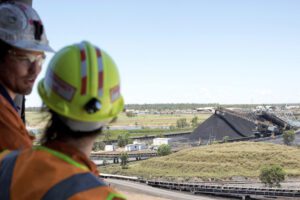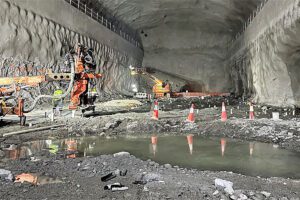There is no doubt that mining is a dangerous occupation. In centuries past, the risk of death and serious injury was a very real possibility for mine workers whether they were extracting coal, metal ore, sand, gravel or precious stones. Mining safety training has been a way to mitigate those risks.
The nature of mining is such that workers are exposed to many hazardous conditions such as heavy machinery, explosions, harmful chemicals, and the collapse of rock and earth. Although Australia has a reputation for having one of the safest mining industries worldwide and significant improvements to health and safety have occurred over the last couple of decades, mining still rates as the third most dangerous occupation in Australia.
On average, 9 workers in the mining industry die each year from work-related incidents. In addition to fatalities, serious injury and illness are inherent risks. The most common injuries experienced by mine workers and their causes include: damage to muscles; slips and falls; contact with moving objects or machinery; working with high-risk plant machinery; and chemical/dust exposure.
READ RELATED CONTENT
- B&R Enclosures Commitment to servicemen and women
- Health & safety incidents one of the biggest loss drivers for organisations
- Q & A with Professor Sidney Dekker
Health and safety in Australian mines is regulated by the states and territories. A key concept within any of the legislation is that employers have a duty of care to provide and maintain a hazard-free workplace. In addition to providing basic requirements such as adequate safety gear, properly maintained machinery and equipment, protection from dust and fatigue-friendly rosters, employers need to provide training to ensure employees have adequate knowledge of how to use the equipment correctly and safely conduct themselves in the workplace.
Training is the process of acquiring new knowledge, learning how to do a new task, or sometimes just as importantly, education on what you should not do. The number one outcome of training for health and safety is to eliminate death and injury- to ensure that every employee goes home safely at the end of their shift. It is important in an industry that is particularly dangerous, such as mining, that employees are provided with the latest health and safety training on a regular basis.
As well as reducing the number of deaths and serious injuries and illnesses, effective training can reduce property and machinery damage; result in fewer employee days off; and reduce the number of workers’ compensation claims and payouts, which may result in lower insurance premiums for the organisation.
Regular training helps to ensure organisations and their employees are legally compliant with state legislation. Heavy fines and imprisonment can apply for non-compliance. Other consequences, such as death or injury can bring about enforced shutdowns, litigation and workers’ compensation claims, which have a negative effect on production and business economics.
When employees are competent and able to perform tasks through proper training, they are much more likely to experience job satisfaction. Effective training can increase worker productivity and satisfaction because, without the worry of personal safety, workers are able to better focus on their tasks.
A top-down approach to health and safety within the workplace also positively changes the safety culture of a workplace. This promotes enthusiasm for training and following of safety procedures. With a safety culture like this, more experienced employees are also much more willing and capable of passing on proper skills and procedures to their subordinates, whether through official training or on-the-job instruction. New employees to the organisation benefit from increased access to training and the flow on effects are that employees and workers who are generally happier with the organisation are likely to be more loyal, and less likely to leave, so companies retain valuable skilled workers
Whilst the benefits of training to reduce the physical risks associated with mining is well established, addressing mental health problems and the interplay between mining and miner’s mental health is a relatively unexplored concept.
Associate Professor Carole James, Associate Director of the Centre for Resources Health and Safety at the University of Newcastle, believes that evidence-based mental health training methods should be an integral part of any mining operation to benefit the mental health of workers. A/Prof James’s research has shown that training mining supervisors to recognise and support workers experiencing mental health problems can lead to better outcomes for employees’ distress levels, as well as benefit the organisation by reducing absenteeism and presenteeism (the loss of production from an employee being present at work, but not engaging in tasks efficiently).
“The workplace offers an exclusive opportunity to address mental health issues, especially in industries such as mining and with a male-dominated workforce, to encourage awareness and knowledge of mental health and how employees can seek appropriate help”. Mental health training aims to build supervisor’s skills and their capacity to address mental health problems in their staff.
More specifically, training in mental health helps supervisors develop an understanding of the difference between mental health problems and mental illness; recognise the signs that someone is experiencing difficulties in the workplace; identify support that can be recommended to a person experiencing mental health problems; demonstrate how to conduct a discussion with a team member about mental health problems at work; and provide knowledge of legislative responsibilities and organisational policies relevant to mental health management in the workplace; thus ultimately improving worker safety and the potential to save lives.
Read more Mining Safety News














Add Comment